Reimagine your approach to 10 timeless people choices to compete for talent, improve organizational culture and health, and more.
A multinational discount grocery chain found itself in a challenging yet relatable situation. It had outgrown its more traditional, centralized model through strong expansion, and it had digitized, improved, and re-shaped many of its processes. But these changes also contributed to a shift in culture and a disconnect between blue-collar and white-collar workers—obstacles the company faced as it strove to attract, hire, and retain the best talent in support of its ambitious goals.
To help companies navigate talent in today’s ever-evolving business landscape, we combined our perspectives with insights from 150-plus people leader interviews to identify 10 timeless, essential questions across four categories that all organizations should answer.
While we’ve included the percentages of organizations, according to our survey, that opt for each design choice below, the right option will depend on the specific needs of each organization.
Attraction
1. Are we hiring critical talent ahead of demand or to fill vacancies?
- An organization may choose to hire high-potential employees, irrespective of current vacancies, to not miss out on exceptional candidates when talent is scarce. However, finding appropriate positions for these candidates is necessary to prevent attrition and underutilization.
- In contrast, an organization may choose to hire only for vacant positions if very specific expertise is required for a role, making occasional exceptions for positions with scarce talent availability. Leaders must ensure efficient, effective recruiting processes to prevent long-standing vacancies.
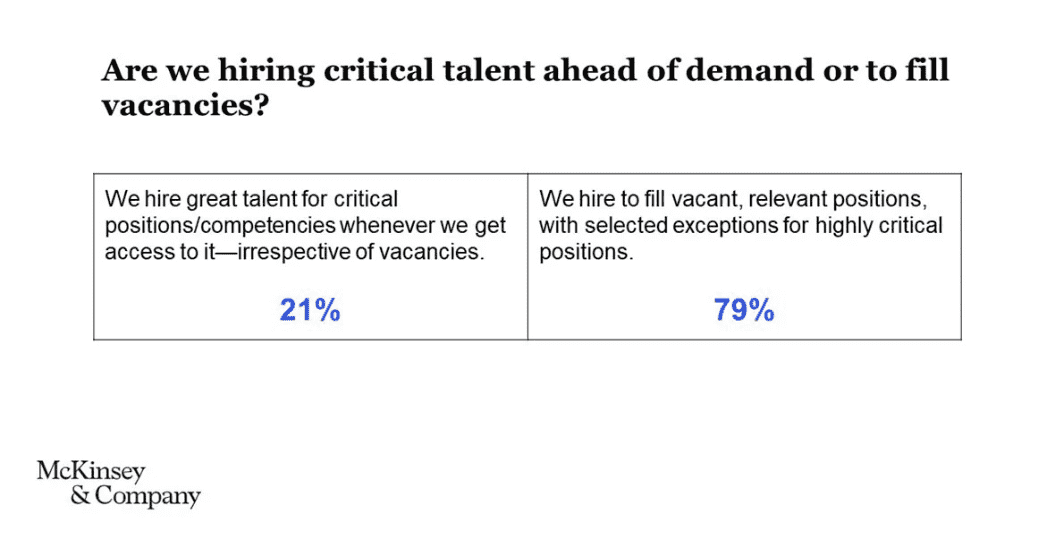
2. How do we balance internal and external sourcing?
- A company with sufficient talent inflow may prefer to source candidates internally, increasing internal talent fluidity and avoiding potential risks of external hires, such as unsuccessful cultural integration.
- Others may prioritize sourcing internally while hiring externally as needed.
- Organizations that prioritize finding the truly best candidate will invest in both internal and external sourcing processes.
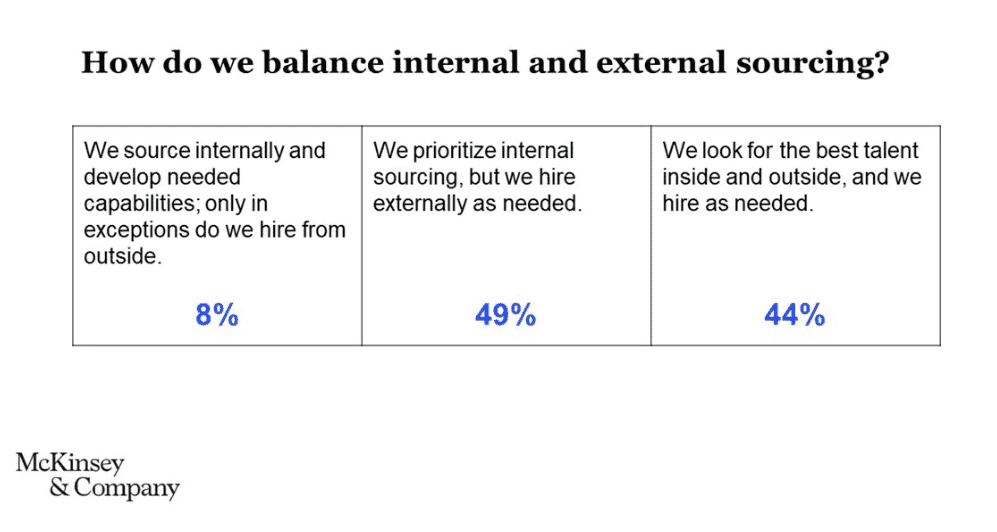
Development
3. Do we favor developing expertism or generalism?
- If an organization focuses on solving complex, technical problems, expertise is key; it may choose to foster expertism in all its employees.
- An organization may favor expertism for most, while allowing those employees to also fill leadership roles.
- An organization may believe that true people leadership and generalism makes the difference, also moving leaders around quickly on an as-needed basis.
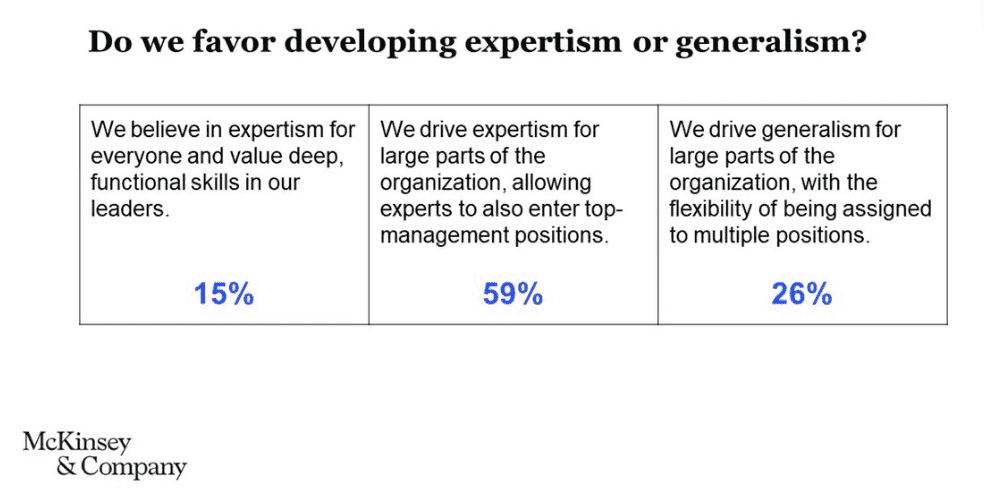
4. Do we predefine career paths, or do we let our people master their own destiny?
- To guide employee progression, an organization may choose to design clear guardrails for all career development.
- Alternately, predefining tracks for specific groups concentrates the effort to talent groups where career development is most relevant and creates the biggest return (e.g., leadership paths).
- Another valid option is to allow employees to take development into their own hands without a laid-out path, believing in their ability to “master their own destiny.”
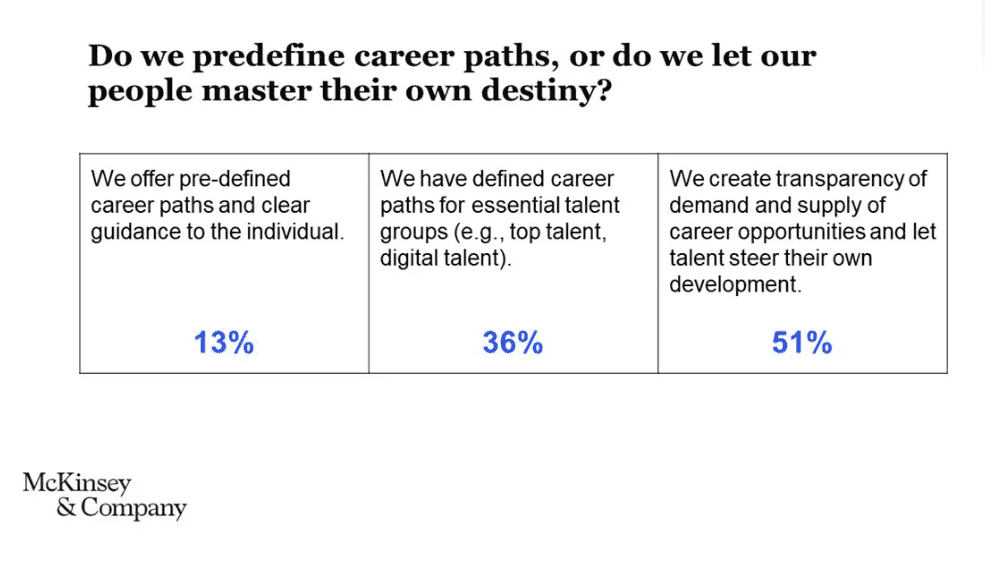
5. What are the triggers and prerequisites of a promotion?
- A numbers-driven organization may choose a progression model based solely on rigorously tracked performance targets.
- Another option is promoting based on both performance and leadership skills—to promote successful people leaders.
- An organization can also take experiences into account to foster breadth and depth.
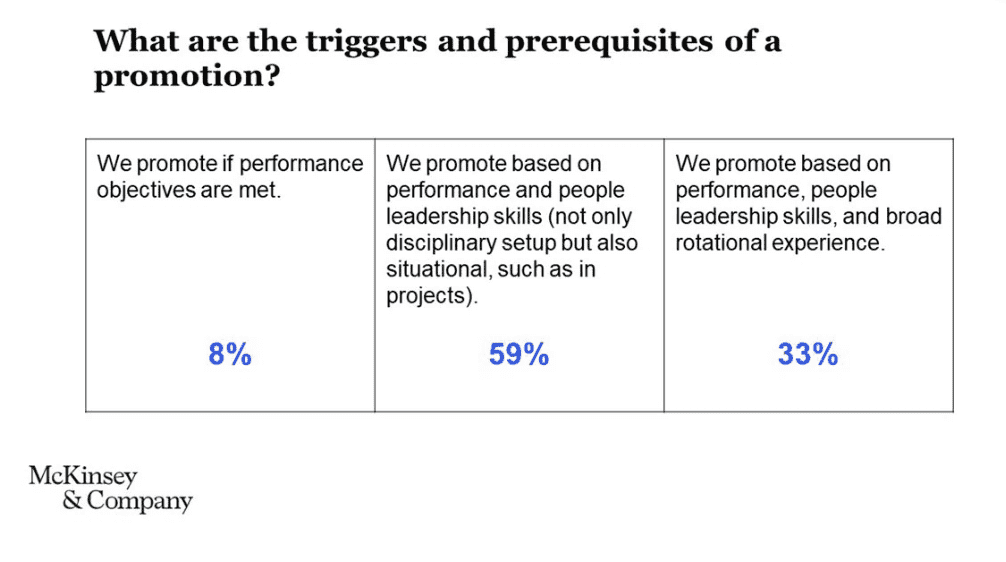
Performance
6. How do we spotlight performance and underperformance?
- An organization that places a strong focus on performance may visibly call out high performers and aggressively weed out low performers— deliberately accepting that such a meritocratic performance culture may reduce employer attractiveness.
- Others may choose to motivate employees by focusing on lighthouse cases of high performance.
- An organization where individualism or competitiveness is seen as threatening to team effectiveness may choose to focus on team performance instead.
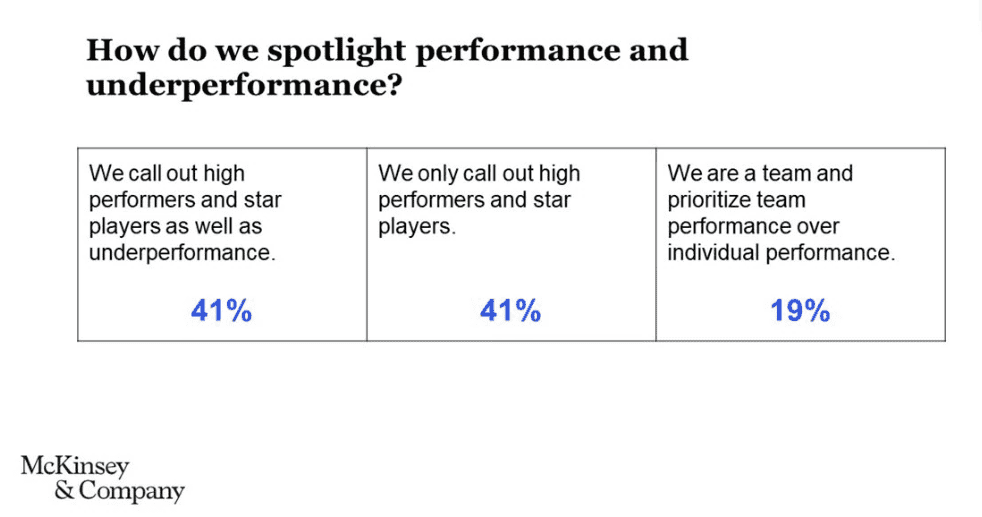
7. How do we reward good performance?
- An organization may aim to drive high performance in employees through financial incentives. This provides flexibility and is relatively easy to implement and track.
- Not all employees are motivated by financial incentives, so some organizations—including those without the freedom to grant large bonuses— may choose to focus on perks and benefits.
- A third possibility is offering a mix of financial and non-financial incentives.
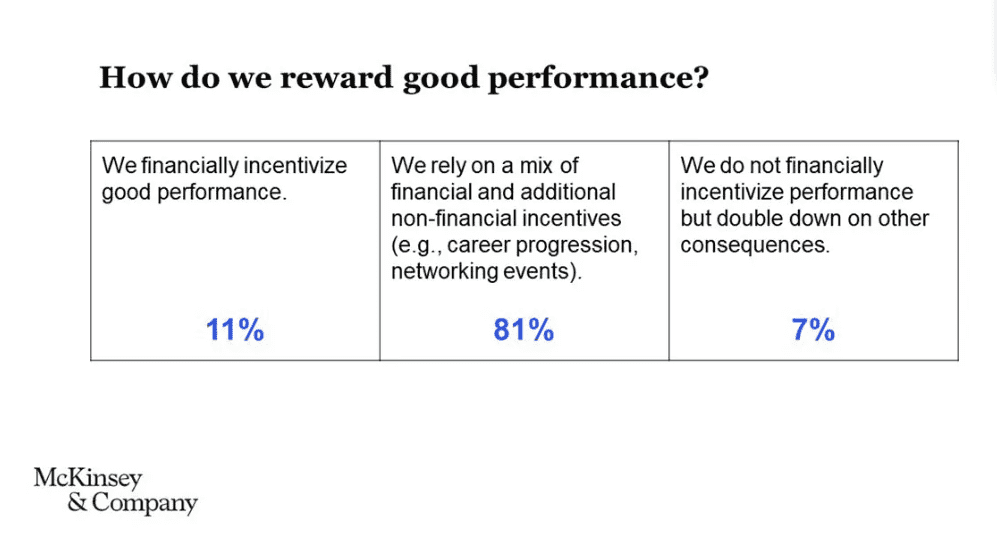
Culture and Leadership
8. What level of cultural cohesiveness do we want to establish?
- An organization with a strong core (e.g., standardized brand, unified business model) may choose to foster a unified culture across regions, functions, and business areas. Often, the company will invest dedicated resources to joint development, talent efforts, and events to maintain cultural coherence.
- Another option may encourage unified cultural elements (e.g., one set of values, one leadership development model) with flexibility for nuances in implementation.
- If a company’s business model is highly complex, the answer may be to allow larger cultural differences—potentially with a few common norms.
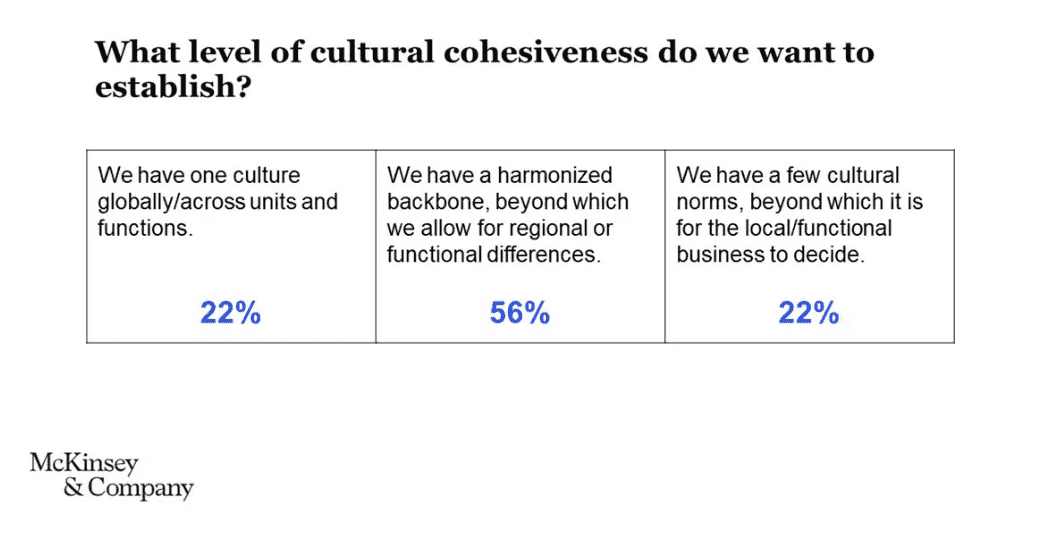
9. What culture of presence do we want to achieve with our talent?
- If an organization wants to reap the benefits of face-to-face interaction (e.g., connectivity, communication), it may take a centralized approach of gathering most employees in joint locations.
- If critical talent cannot be secured in one location, maintaining talent hubs can be a better approach.
- For an organization where remote work does not result in decreased productivity or loss of connectivity, allowing talent to work fully remotely (with alternative methods of co-locating based on need only) may be the right choice.
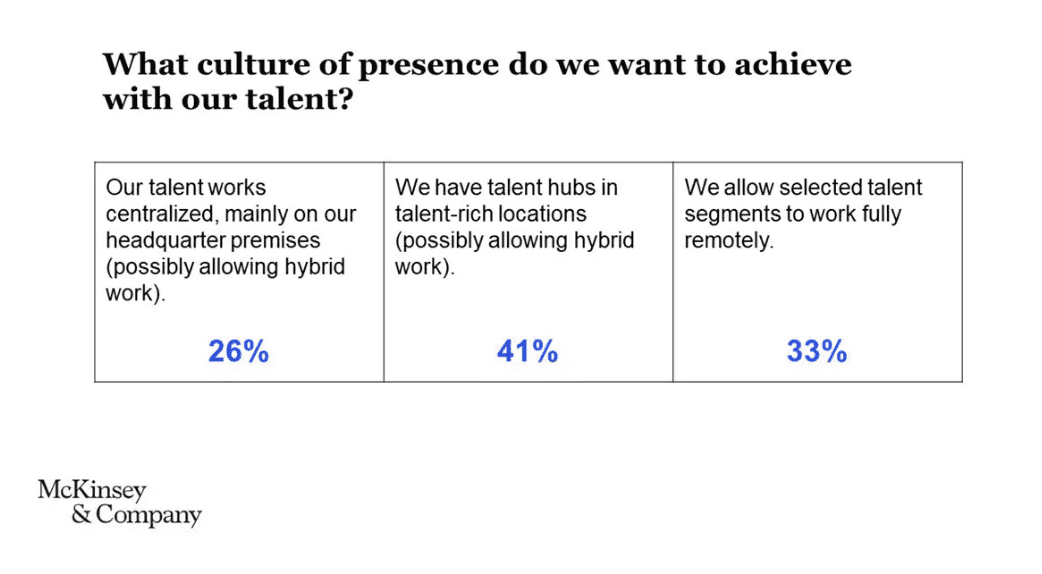
10. Do we prefer a top-down or bottom-up approach to leadership?
- In an organization where clear directions are useful or even required to enable employees to work toward a common goal, a strong top-down approach to leadership may be preferred.
- An organization that wants to empower frontline management can opt to give them authority to make directional decisions.
- Some organizations take this a step further, regarding all employees as leaders in an expression of the belief that everyone has the potential to lead if appropriately supported.
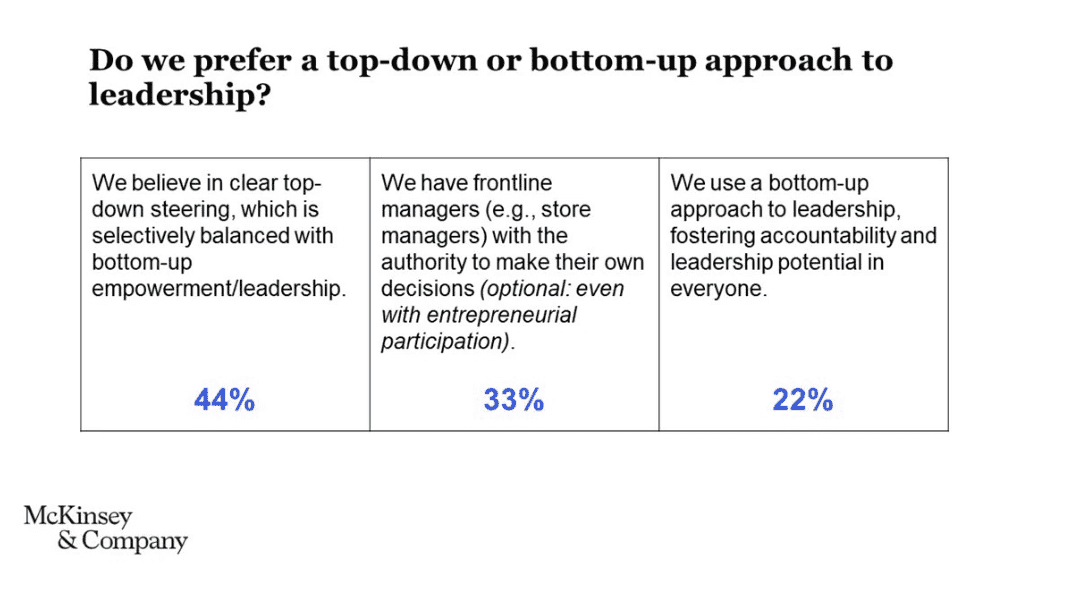
The right people decisions can help an organization compete for talent, improve organizational culture and health, and support human resources along the full talent cycle. Involving a broad coalition of leaders and key stakeholders in these discussions is critical. Jointly weighing benefits and risks associated with specific design choices allows organizations to align these with long-term business strategy. To reduce complexity, we recommend striving to make people choices that apply to all employees, with differentiation accounting for the needs of specific employee groups.
In the case of the discount grocery chain, a top-down leadership style was maintained for blue-collar employees on the shop floor, matching the need for cost-saving and efficient practices in the discount market. Meanwhile, flexibility was needed to attract and retain white-collar candidates, and team leaders were given more authority to make directional decisions.
By identifying and addressing people topics central to its business challenges, the grocery chain was able to lay a solid foundation for a larger strategy transformation, with people at its core.
The article was first published here.
Photo by Rodion Kutsaiev on Unsplash.

 5.0
5.0 





















